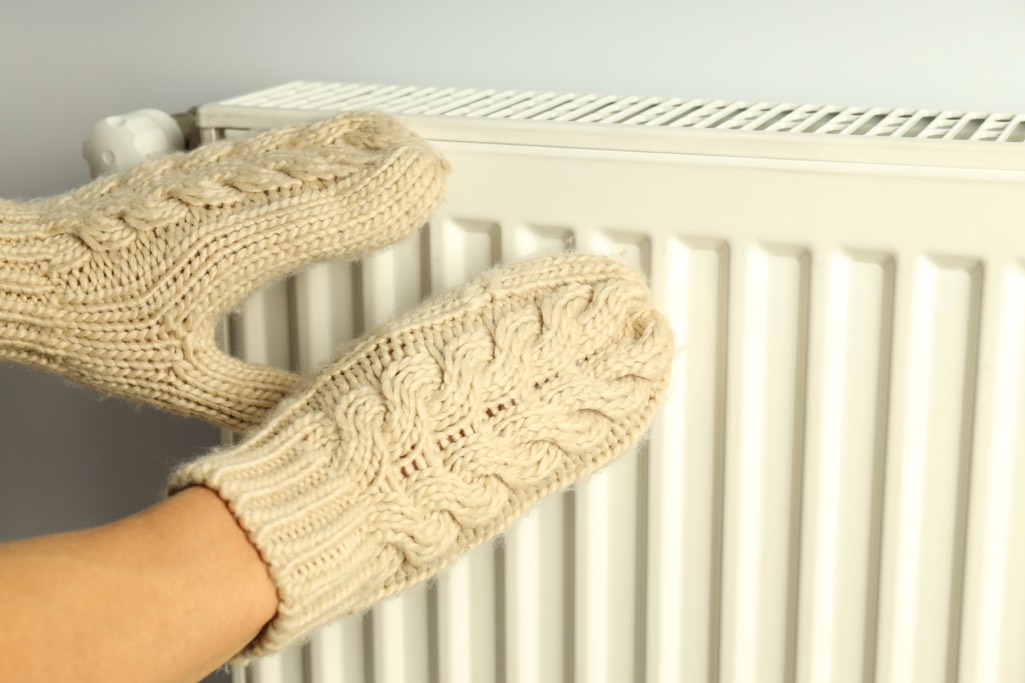A heat pump can take a long time to heat your home for a number of reasons. The most common causes are poor quality insulation in your home, dirty air filters, wrong sizing for the unit, inappropriate temperature setting or lack of maintenance.
Read on to find out more about these issues and other common problems with your heat pump.
Introduction
Heat pumps have become a popular choice for heating homes because they’re efficient and can lower your energy bills. They also help with the environment by burning less fossil fuels. But if you’ve noticed yours taking a bit longer than expected to warm things up, you’re probably wondering what’s going on. This is a common complaint, and the reasons can vary quite a bit.
In this article we’ll look at why that is and what you can expect if you’re new to heat pumps. We’ll also provide a list of possible causes if your heat pump is particularly sluggish to get your home to a comfortable temperature.
Key takeaways
- Heat pumps heat slowly when outside temperatures are extremely low due to their operating limits.
- Poor insulation and air leaks in the home can make the heat pump’s job much harder and slower.
- A dirty or clogged air filter or outdoor unit reduces efficiency and slows heating time.
- Inadequate sizing or outdated heat pump models often struggle to warm a space quickly.
- Regular maintenance and proper thermostat settings can significantly improve heating performance.
Background
The first thing to understand about heat pumps is that they do not work like traditional gas boilers. With a traditional gas boiler you get a strong blast of heat when you turn it on, which finds its way into your radiators and underfloor heating system to give you nice warm home.
A heat pump is a very different proposition. It heats your home slowly but surely. Air-source heat pumps run at a lower flow temperature and distribute heat over a larger surface area. In heating terms it’s more of a ‘Steady Eddie’ than a ‘Frantic Freddie’. We normally recommend leaving your heat pump on continuously, with a lower set temperature for the night and a higher set temperature for the day.
It’s important to understand this difference when it comes to your expectations around the amount of time it will take to get your home warm, especially in extremely cold weather. That being said, if your heat pumps takes a long time to heat there may be a genuine problem.
Below is a list of the most common heat pump problems which may be affecting your hvac system:
Operating limitations in cold weather
Heat pumps work by transferring heat from in outside air to inside your home. When the outside temperature plummets, the available heat energy for the pump to capture dwindles, making the process slower and less efficient. Understanding this natural limitation can ease your frustration, especially if you live somewhere with cold temperatures in winter.
How heat pumps work in low temperatures
Heat pumps extract heat even from cool air, but as the outdoor temperature approaches freezing and drops below, their effectiveness takes a hit. They rely on a refrigerant cycle to gather heat and pump it indoors, but when it’s very cold, the unit has to work harder and longer to maintain warmth. This means you might see longer run times and slower heat build-up in your rooms during these cold snaps.
Defrost mode and its impact
To keep running efficiently, heat pumps occasionally enter a defrost cycle to melt frost that builds up on the outdoor coil. During this time, the system temporarily switches to cooling mode or pauses heating briefly. This means there will be short periods when your home feels cooler or slower to warm up. While this can be a bit annoying, it is necessary to prevent damage and maintain a properly working heat pump over the season.
Home insulation and air leakage
We’ve written about this elsewhere on the site. But even the best heat pump struggles if your home isn’t well insulated or sealed properly. Heat escaping through walls, windows, or gaps can leave your system running nearly nonstop but with slow results. If your heat pump is taking a long time to heat, this will be one of the first places to look.
The role of insulation
Insulation acts like a cozy blanket for your home, keeping heat in and cold air out. If your walls, attic, or floors have insufficient insulation, the heat pump’s efforts to warm your space are undone by constant heat loss. It’s one of the most common problems that we see. Upgrading insulation can make a surprisingly big difference, letting your heat pump work quicker and with less effort.
We have lots more information on the site about the types of insulation that you might want to install. But typically we advise homeowners to look at the big 3 – external walls, windows and doors and loft.
If you live in an older house (built before 1970) you will probably have little or no cavity insulation in the external walls. This means a massive amount of heat will be lost and your heat pump will struggle to keep up. Upgrading your eternal wall insulation is not a small job, but can make a huge difference to how well your home retains heat.
Windows and doors are also a big culprit with heat loss in older homes. Again, upgrading these is often not cheap, but can make a huge difference to your heat retention.
The good news is that loft insulation is a relatively easy way to improve the thermal performance of your home. The modern standard of loft insulation is 270mm as a minimum. You may already have loft insulation but if it was installed some time ago, it may be significantly less than this. It is a good idea to check.
Identifying and sealing air leaks
Common air leaks hide behind baseboards, around window frames, or in attic hatches and can let cold air rush in while warm air escapes. Simple fixes like weatherstripping, caulking, or installing door sweeps can slow down heat loss and reduce the workload on your heat pump, leading to more comfortable, faster heating. This is a simple and easy fix.
Unit maintenance and cleanliness
Sometimes, your heat pump is just asking for a little TLC. Regular maintenance not only extends its lifespan but also keeps heating quick and efficient. Dirty components work overtime and cause delays that are entirely preventable. We’ve listed some common issues around maintenance below. We suggest you look closely at these if your heat pump takes a long time to heat.
Dirty filter
The air filter is your heat pump’s front line of defense against dust and debris. When it’s clogged, airflow drops, making it harder for the system to push warm air through your home. Changing or cleaning filters monthly during heavy use seasons keeps things moving smoothly and improves heating speed.
Outdoor unit cleaning and clearing
The outdoor condenser needs clean coils and clear airflow to pull heat effectively. Leaves, dirt, or snow buildup on or around the unit can act like a blanket that suffocates performance. Taking a few minutes to clear debris before the heating season or whenever you notice buildup can prevent slow heat delivery due to overwork or overheating.
Professional tune-ups
A yearly check-up by a qualified hvac professional ensures refrigerant levels are right, electrical parts are working, and no hidden issues are lurking. Think of it like a doctor’s visit for your heat pump—it helps catch problems early before they slow things down or cause breakdowns.
System size and model efficiency
You might be tempted to get the biggest heat pump you can afford. After all you want your room temperature to be nice and warm. This is a mistake. It can mean that your heat pump cycles too frequently. Choosing a heat pump that fits your home is more than a matter of square footage; it’s about matching its capacity to your heating needs.
A misfit can lead to your system struggling to keep up, which feels like waiting for winter to end before the warmth arrives.
Too small or too large
A unit that’s too small will run nearly constantly without reaching the temperature you want quickly. One that’s oversized may cycle on and off frequently, preventing consistent warmth. Both situations reduce comfort and energy efficiency, so proper sizing is key.
Efficiency ratings matter
Newer heat pumps often have better technology and higher efficiency ratings like SEER and HSPF, designed to heat your home quicker with less energy. Older models, while still functional, usually don’t work as fast or cost as little to operate. Upgrading can feel like stepping into the future of home comfort with much less waiting around for heat to settle in.
Backup heating system
If your heat pump can’t quite keep pace and takes a long time to heat, some homeowners add supplemental heating sources like electric resistance coils or space heaters to boost warmth during the coldest days. This isn’t a perfect solution but can provide peace of mind and speed when you need it most.
Thermostat settings and user habits
Sometimes, the reason your heat pump seems slow is tied to how the thermostat is set or how you’re using the system each day. Small adjustments can influence how quickly your home warms up and feels inviting again. Once again, a heat pump does not function like a traditional gas boiler.
Temperature setpoints and ramp-up
If you set your thermostat to jump straight from a low nighttime temp to very warm in the morning, your heat pump might take a while to catch up. Gradually increasing the set point or allowing the system to maintain a steady temperature overnight can reduce waiting times and energy spikes.
Programmable and smart thermostats
Using programmable or smart thermostats lets you tailor heating schedules that match your lifestyle while preventing the system from overworking. Some models even learn your habits and adjust settings to keep heat flowing efficiently without you needing to fiddle with controls constantly.
Regular use vs. occasional heating
Heat pumps perform best when running consistently at moderate levels rather than being turned on and off frequently or turned up from very low temperatures. Keeping your home conditioned rather than letting it cool down completely can make heating feel faster and less stressful for your system.
Impact of doors and vents
Closing doors to limit heating to certain areas or obstructing vents can disrupt airflow balance, making it harder for your heat pump to warm your home evenly. Ensuring that vents are open and unblocked helps the warm air circulate well, speeding up the warming process naturally.
My heat pump takes a long time to heat – in summary
If you’re reading this article it’s likely that you either have a heat pump already or you’re thinking of installing one. We have lots of information on this about heat pump installation including the cost of installing a heat pump and the likely running costs. We also have information about what Government grants are available.
Don’t forget to check out our YouTube channel too with more information.

